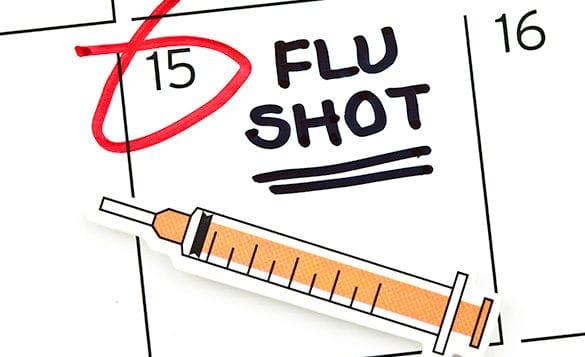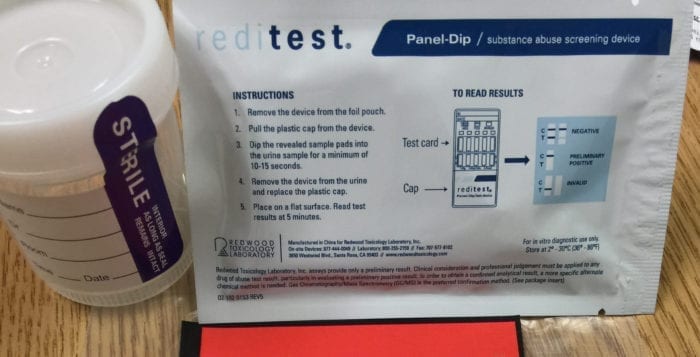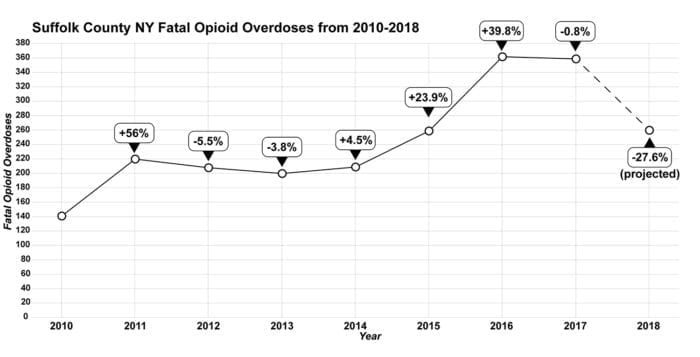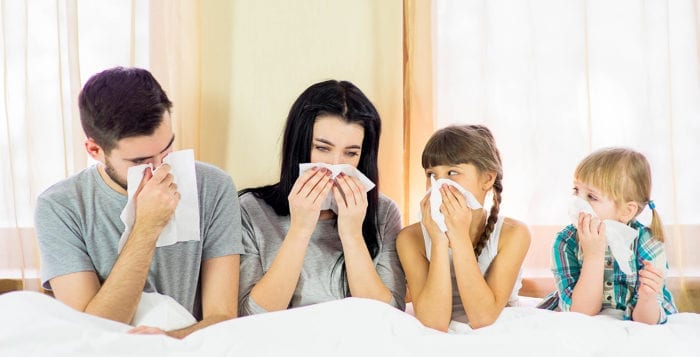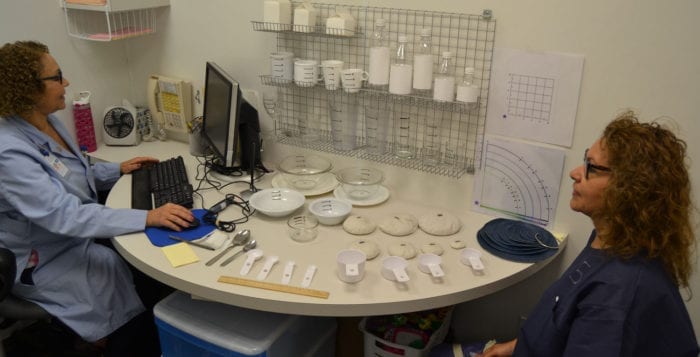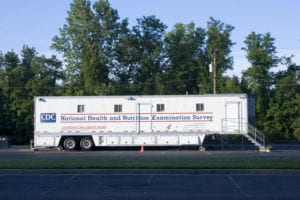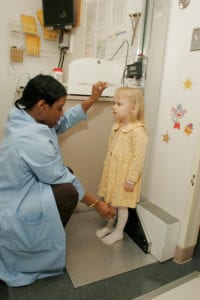Flu season is hitting harder than usual across the United States this year, and New York has been no exception.
The New York State Department of Health Weekly Influenza Surveillance Report for the week ending Feb. 3, the most recent week available, said it was the ninth consecutive week that widespread influenza activity was reported. The “widespread” distinction means two or more additional lab-confirmed cases of influenza were reported in greater than 31 of the 62 counties in the state per 100,000 people. Nearly 16,000 lab-confirmed cases were reported for that week in New York, compared to about 5,300 for the same week in 2017.
More than 1,100 cases were reported for the same week in Suffolk County, bringing the season-to-date total to 3,301. The week ending Feb. 3 saw nearly identical numbers for the preceding two weeks in Suffolk combined. Three influenza-associated pediatric deaths have been reported in New York so far this season, and 63 nationwide.
A Feb. 9 update from the Centers for Disease Control and Prevention indicated influenza-like illness reached 7.7 percent, the highest rate since the 2009 H1N1 pandemic, or Swine Flu, which peaked at 7.7 percent. The overall hospitalization rate was higher for the past week than the rate reported for the same week in 2015, a high severity season, according to the CDC. Of the last six flu seasons, the 2017-18 hospitalization rate — 60 hospitalizations per 100,000 people — is the highest at this point in the season. Hospitalization rates have only exceeded 60 per 100,000 people over that span for nine weeks cumulatively — six weeks in 2015 and three weeks in 2017. Influenza-like illness has been at or above the national baseline for 11 weeks. During the last five flu seasons, influenza-like illness remained at or above baseline for 16 weeks on average, meaning the current flu season should be expected to continue for at least the next several weeks.
Flu prevention tips from the CDC:
1. Avoid close contact.
Avoid close contact with people who are sick. When you are sick, keep your distance from others to protect them from getting sick too.
2. Stay home when you are sick.
If possible, stay home from work, school, and errands when you are sick. This will help prevent spreading your illness to others.
3. Cover your mouth and nose.
Cover your mouth and nose with a tissue when coughing or sneezing. It may prevent those around you from getting sick.
4. Clean your hands.
Washing your hands often will help protect you from germs. If soap and water are not available, use an alcohol-based hand rub.
5. Avoid touching your eyes, nose or mouth.
Germs are often spread when a person touches something that is contaminated with germs and then touches his or her eyes, nose, or mouth.
6. Practice other good health habits.
Clean and disinfect frequently touched surfaces at home, work or school, especially when someone is ill. Get plenty of sleep, be physically active, manage your stress, drink plenty of fluids, and eat nutritious food.
“I think something that the public tends to forget from year to year is that influenza is a significant health issue,” said Dr. Michael Grosso, the chief medical officer at Huntington Hospital. “Were this any other kind of infection, we would be rather alarmed as a country. We’re sort of accustomed to the flu.”
Suffolk County Executive Steve Bellone (D) and Health Commissioner Dr. James Tomarken announced last week the county is offering free influenza immunization to residents following Gov. Andrew Cuomo’s (D) declaration of a statewide public health emergency.
“The health and wellness of our residents is of utmost importance,” Bellone said in a statement, also thanking Cuomo for the emergency declaration, which resulted in the release of funding to allow for the free flu shots.
Tomarken and Grosso each stressed it is not too late in the season to obtain a flu shot.
“I think it’s important that leaders not ever send mixed signals about this,” Grosso said.
Cuomo also directed the Suffolk DHS to provide educational information to schools, colleges and other service providers about obtaining flu shots and other preventative measures, according to a letter from Tomarken dated Feb. 9 on the DHS website.
Suffolk County Legislator Kara Hahn (D-Setauket) is sponsoring legislation that would, for the first time, collect data on all deaths resulting from influenza virus, not just deaths of those 18 years and younger. If approved, the statistics would be reported monthly during flu season and would become the basis of an annual report on that year’s flu season due to the Legislature each May.
“Our understanding of annual influenza outbreaks is limited by the limited data being collected by national, state and local health officials,” Hahn said in a statement. “When the statistics used to monitor this epidemic excludes nearly 79 percent of Suffolk County’s population it is difficult to get a clear picture of its impact on public health. I know having complete information will aid county officials who need to make reasonable predictions based upon available datasets.”
Legislator William ‘Doc’ Spencer (D-Centerport) is also supporting the bill.
Northwell Health, a health system that oversees several area hospitals including Huntington Hospital, has instituted a new “biosurveillance” system to track and respond to the volume of influenza cases it’s handling this season. Among other benefits, the system enables Northwell Health to proactively manage the distribution of resources, including supplies needed to treat patients and protect staff, such as antiviral medications, rapid-flu tests, masks and gloves.
Grosso said the implementation of the statistics yielded from the new system is still coming along, and he said he anticipates it will be a useful tool during subsequent flu seasons.
Free flu shots are available for Suffolk residents age 2 and older at local pharmacies and for those at least 6 months old at pediatrician and healthcare provider offices. Additionally, the county is offering free immunizations for residents 6 months old and up Feb. 13 from 1 to 3 p.m. at the Riverhead Free Library and Feb. 15 from 5 to 7 p.m. at the H. Lee Dennison Building in Hauppauge. Residents are asked to call 631-787-2200 Monday through Thursday from 9 a.m. to 5 p.m. to schedule an appointment.


